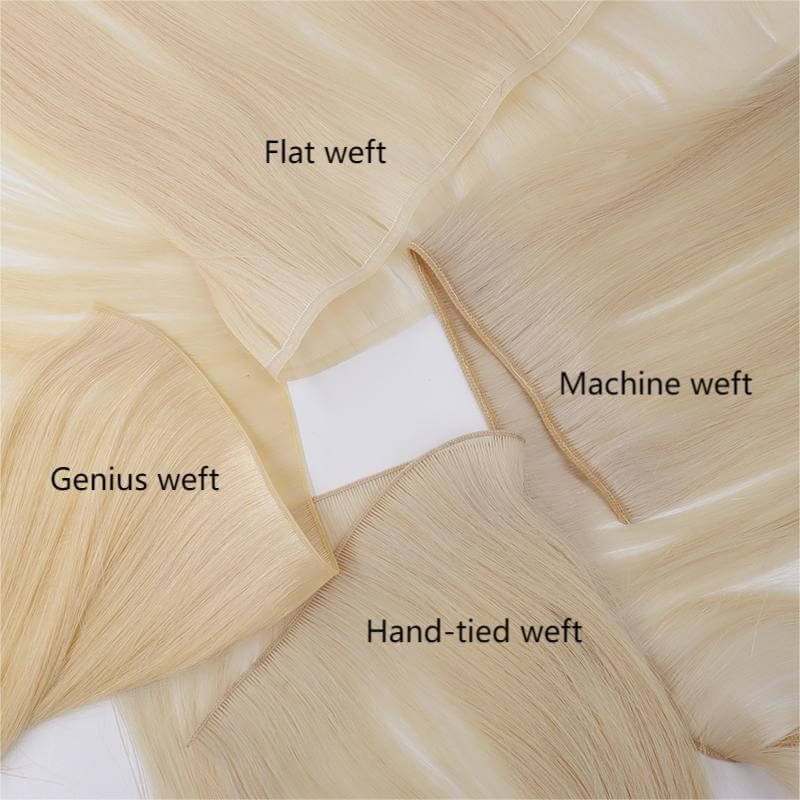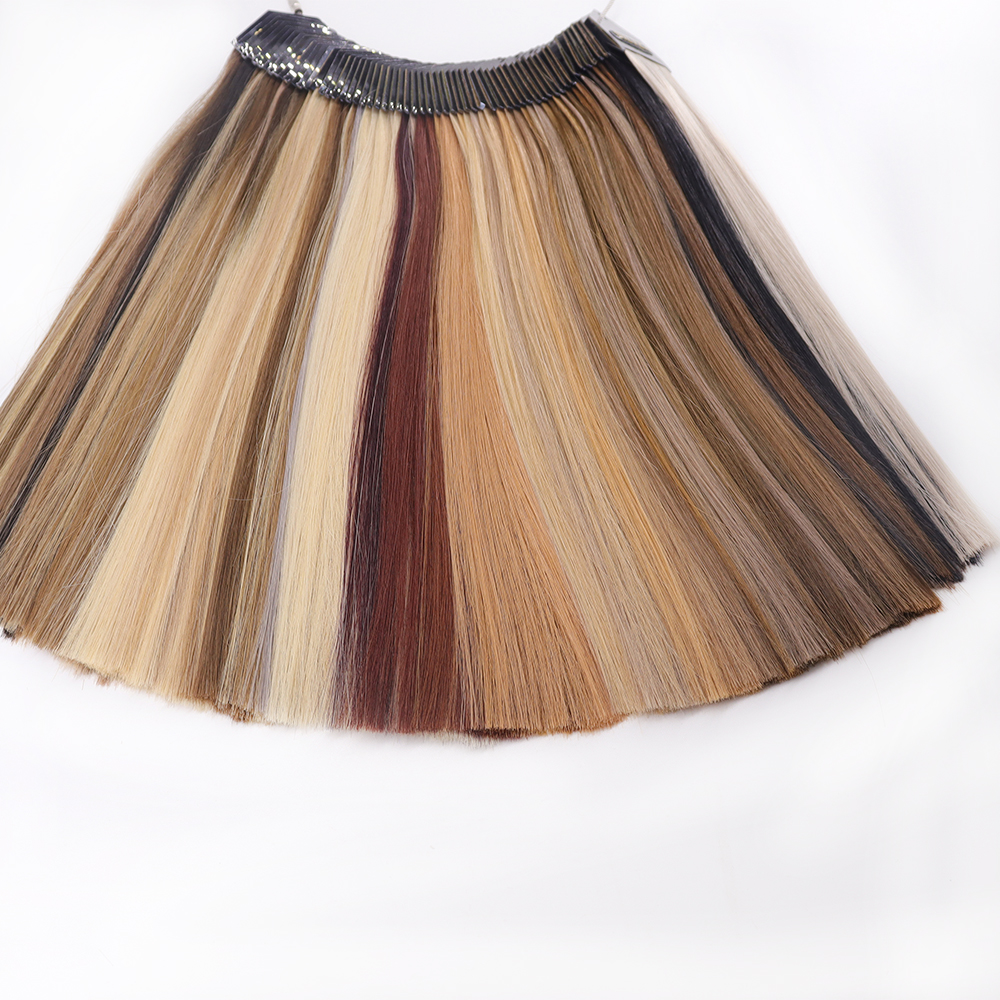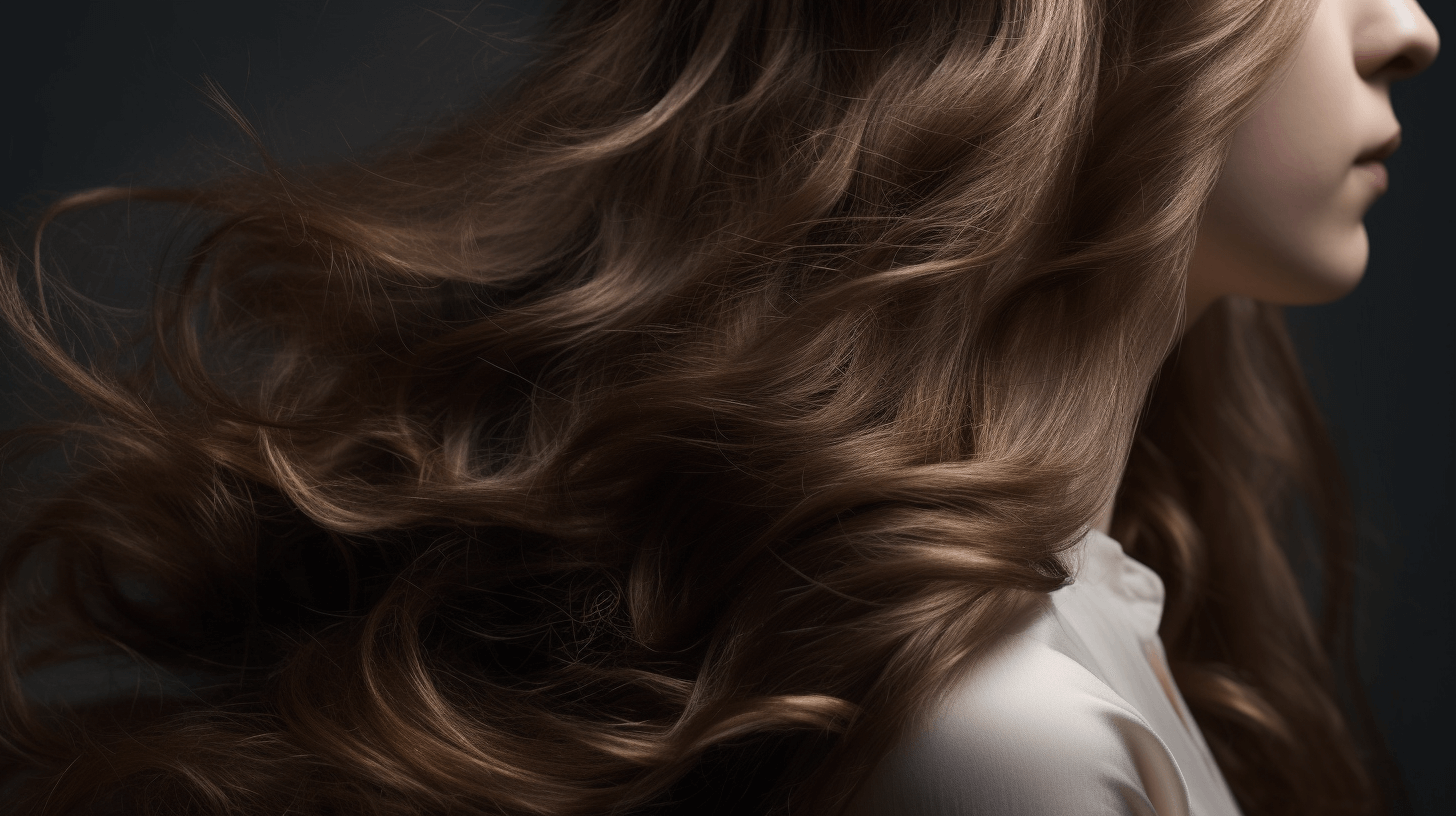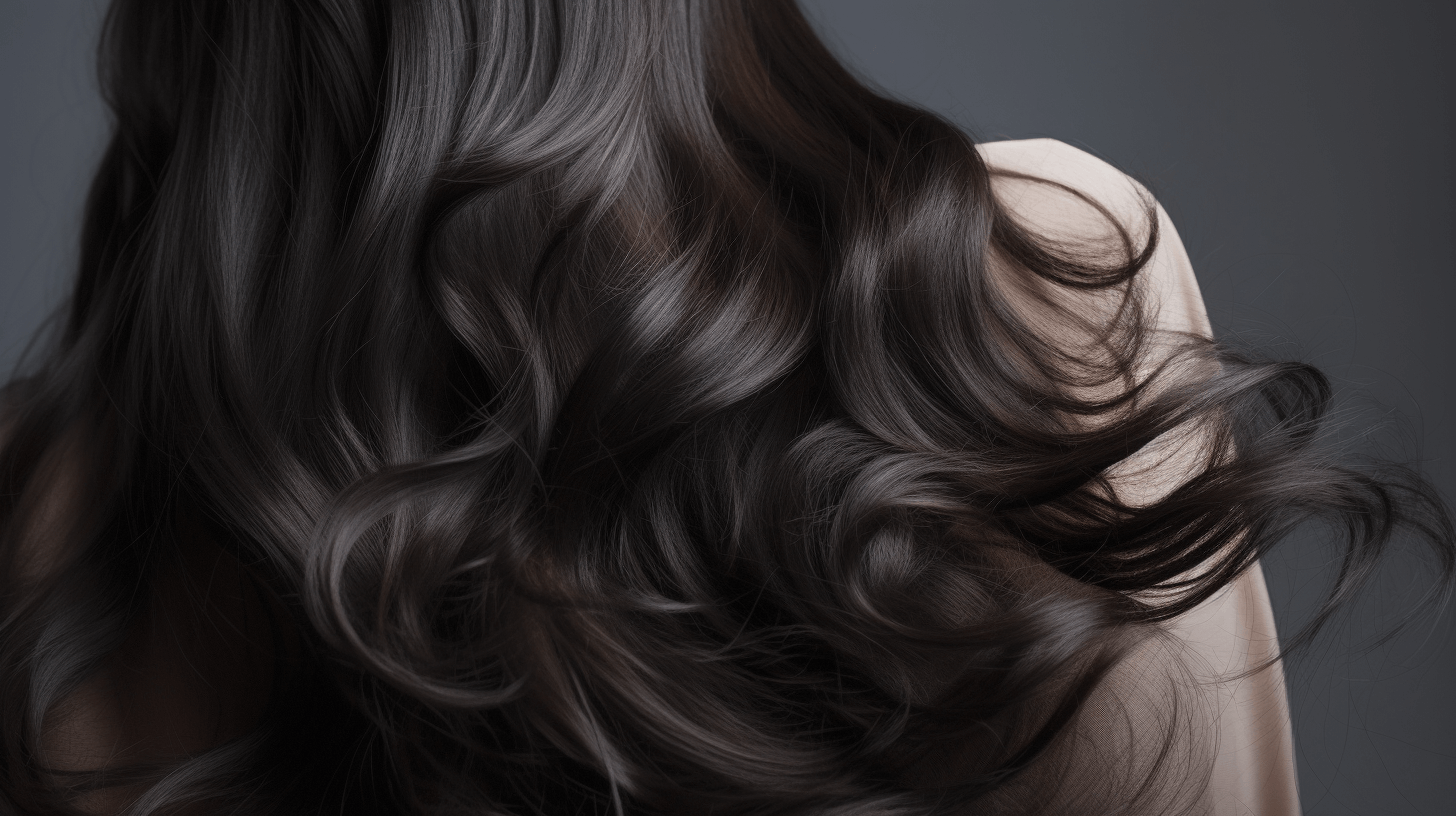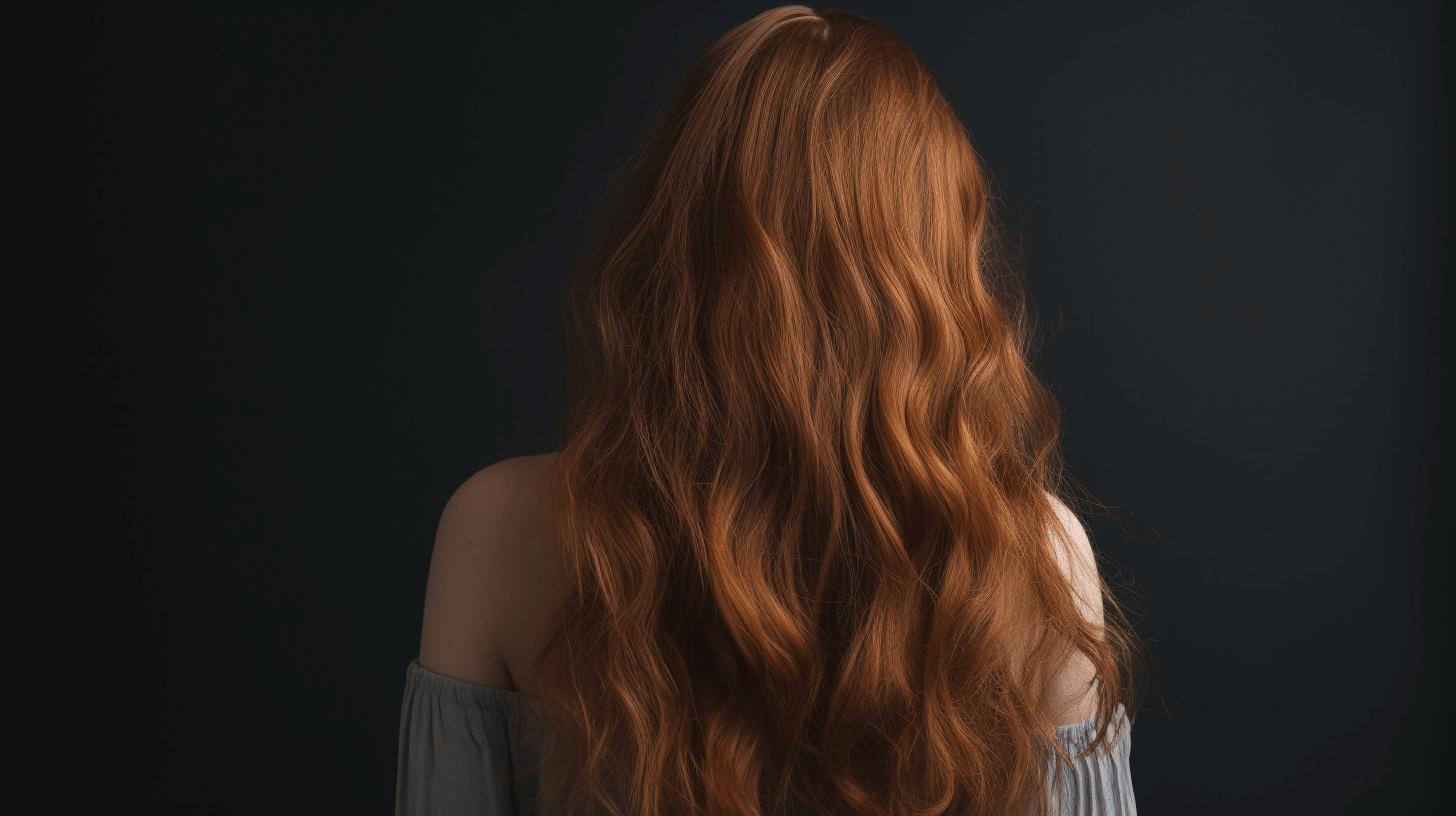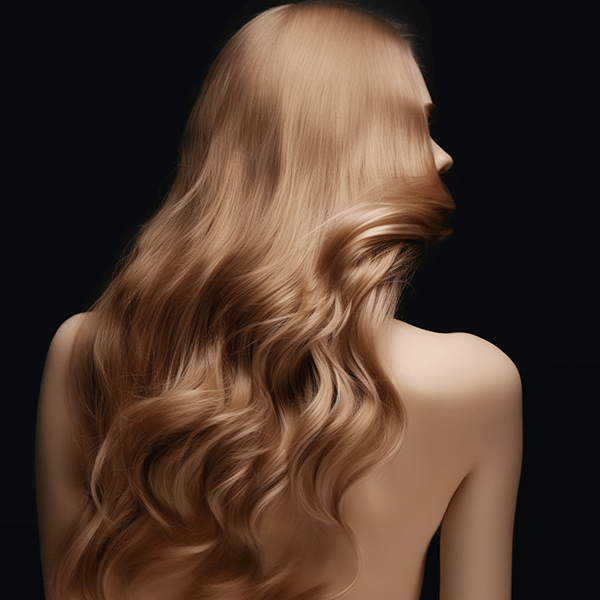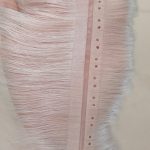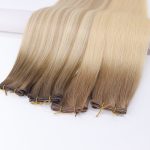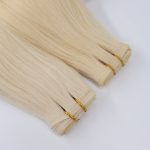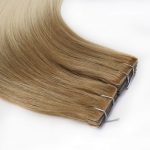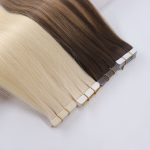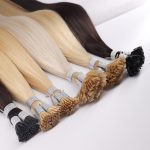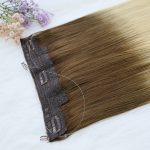In the ever-evolving world of beauty and hair care, hair wefts have emerged as a popular choice for enhancing natural locks. However, with the rise in demand comes a variety of options, each with its unique features. In this guide, we’ll explore the differences between four main types of wefts: Machine Hair Weft, Genius Wefts, Flat Wefts, and Hand-Tied Wefts, helping you choose the perfect match for your hair.
Product Specifications
Machine Hair Weft typically comes in 100-gram units, offering a standard option for those seeking regular volume. Genius Wefts and Flat Wefts are lighter, weighing around 50 grams per piece, and ideal for those who prefer a more subtle enhancement. Hand-tied wefts are the lightest at 12 grams per piece, perfect for those who seek a natural and lightweight addition to their hair.
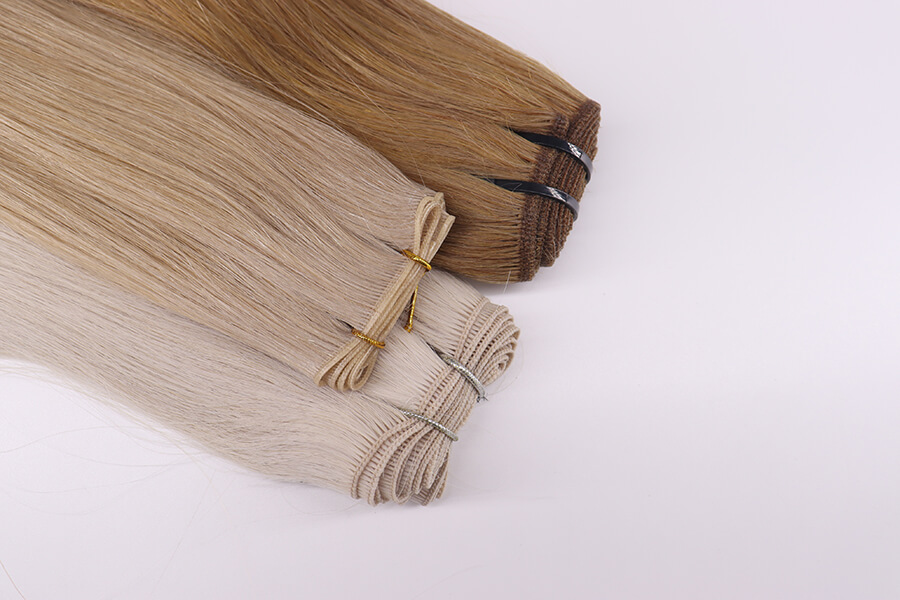
Weft Width
Weft width plays a crucial role in the application and final look. Machine and Flat Wefts have a wider width, providing more coverage. In contrast, Genius and Hand-Tied Wefts are narrower, allowing for a more seamless blend with natural hair.
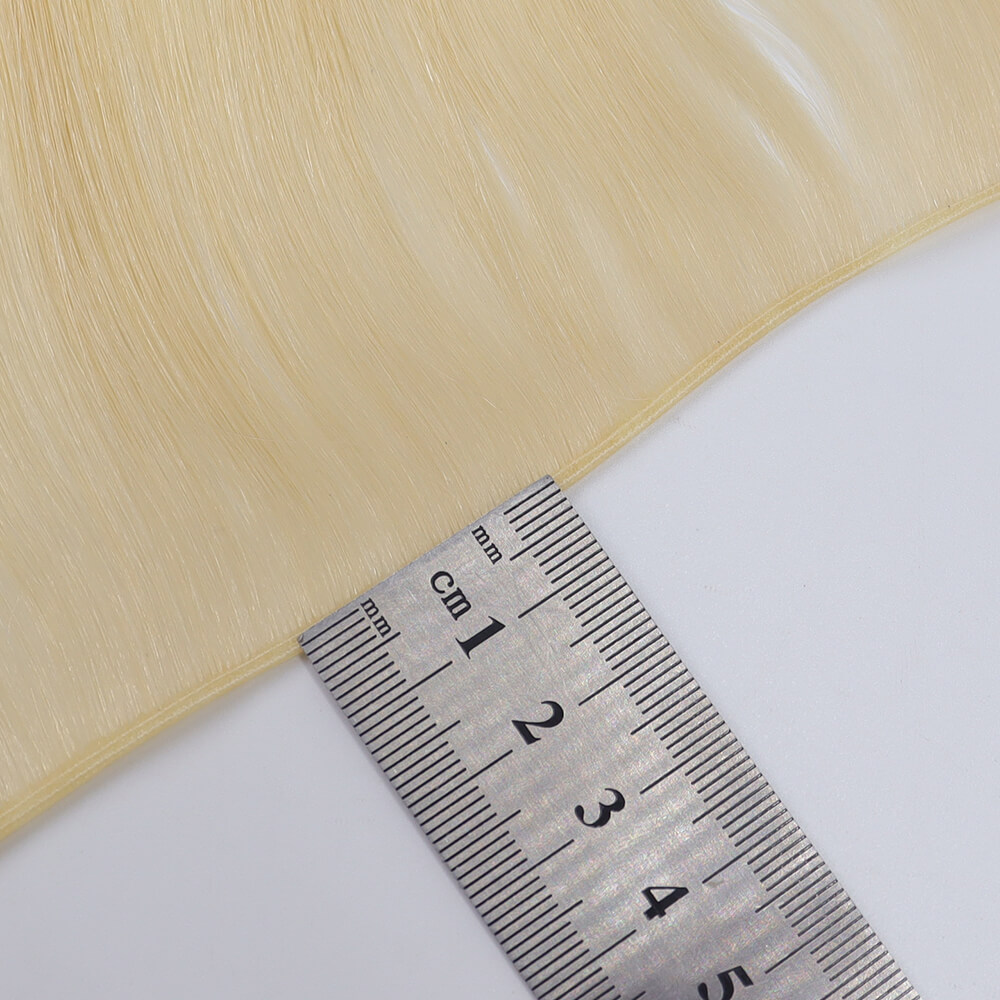
Return Hair
Return hair, or short hair that sticks out from the weft, affects both the feel and appearance of the hair extensions. Machine Hair Wefts and Hand-Tied Wefts typically have return hair, whereas Genius and Flat Wefts do not, offering a smoother finish.
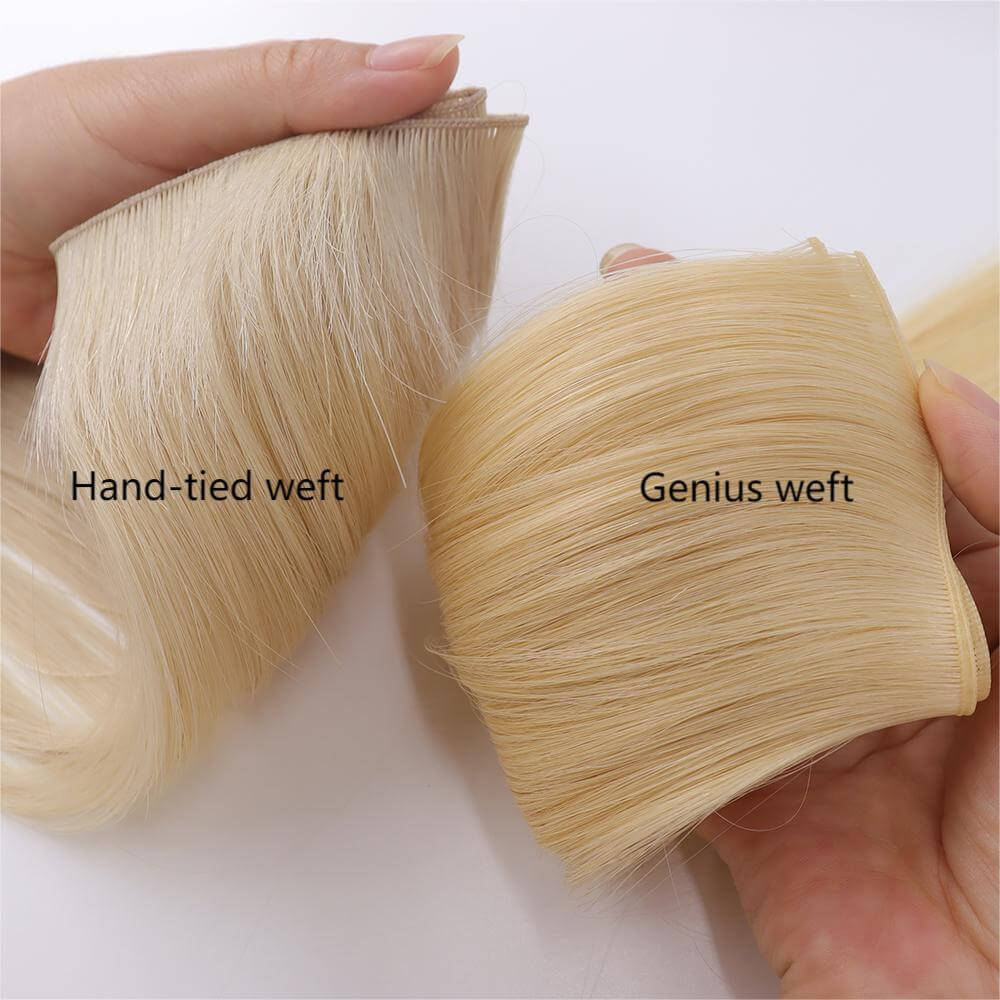
Ability to be Cut
Flexibility in customization is key for many users. Machine Hair Wefts can be cut but require glue to prevent unraveling. Genius and Flat Wefts offer more ease in cutting, whereas Hand-Tied Wefts are not designed to be cut, maintaining their integrity as crafted.

Invisibility
When it comes to blending seamlessly with natural hair, invisibility is a critical factor. On a scale of 1 to 3, Genius and Hand-Tied Wefts score the highest (3) for their excellent invisibility, followed by Flat Wefts (2), with Machine Hair Wefts being the least invisible (1).

Comfort
Comfort is paramount, especially for extended wear. Both Genius and Hand-Tied Wefts rate the highest (3) in comfort, offering a lightweight and gentle experience. Flat Wefts follow closely (2), with Machine Hair Wefts being less comfortable (1) due to their heavier and thicker construction.
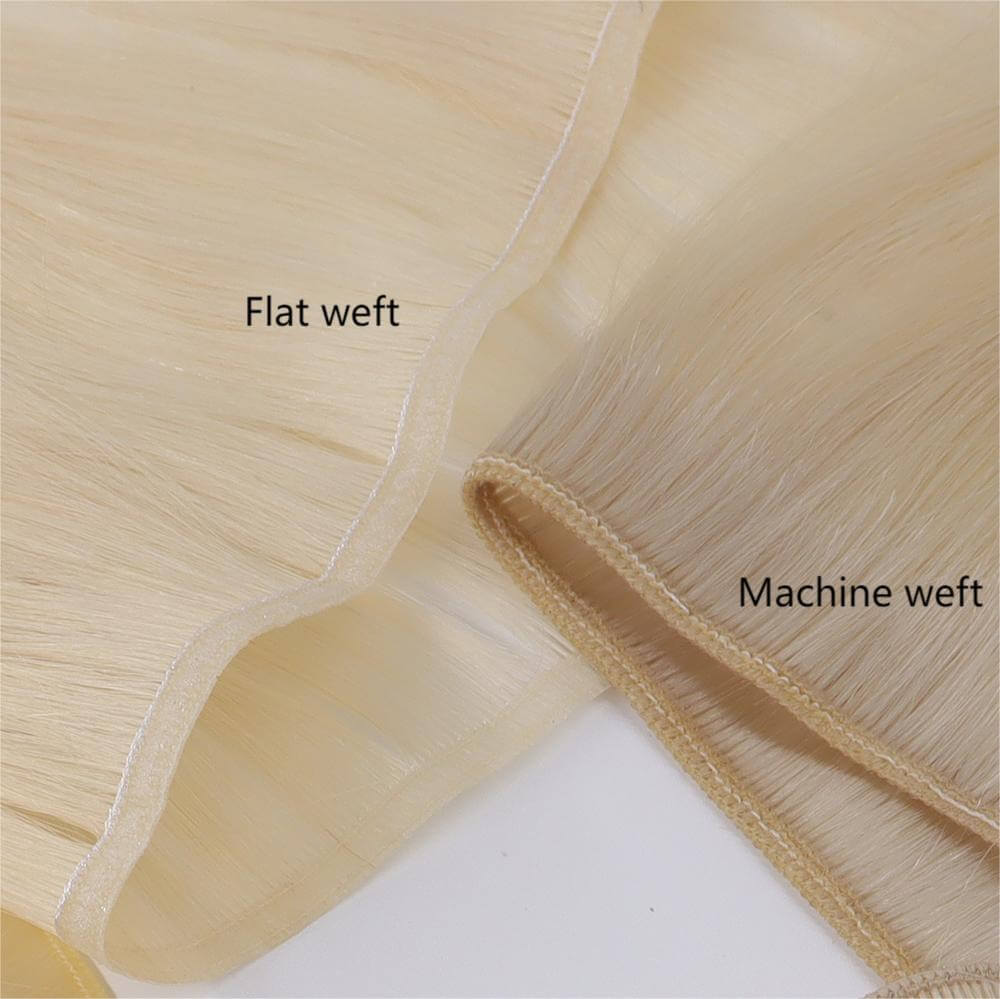
Unit Price
Price is an important consideration. On a scale of 1 to 3, where 3 represents a higher price, Hand-Tied Wefts are the most expensive (3), reflecting their intricate handcrafting process. Genius and Flat Wefts are moderately priced (2), while Machine Hair Wefts are the most affordable option (1).
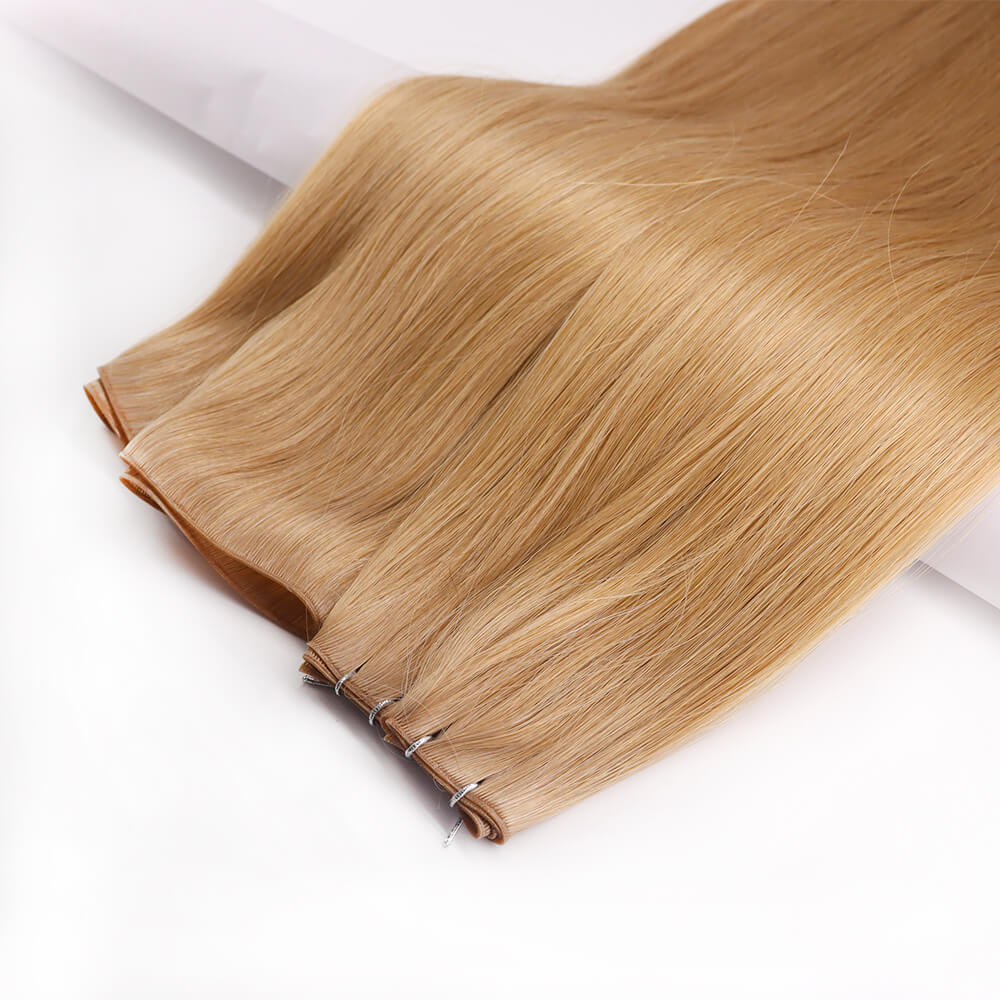
Delivery Time
Lastly, delivery time can be a deciding factor. Machine, Genius, and Flat Wefts typically have faster delivery times, thanks to their more streamlined production processes. Hand-tied wefts, due to their labor-intensive manufacturing, might have a slower delivery time.
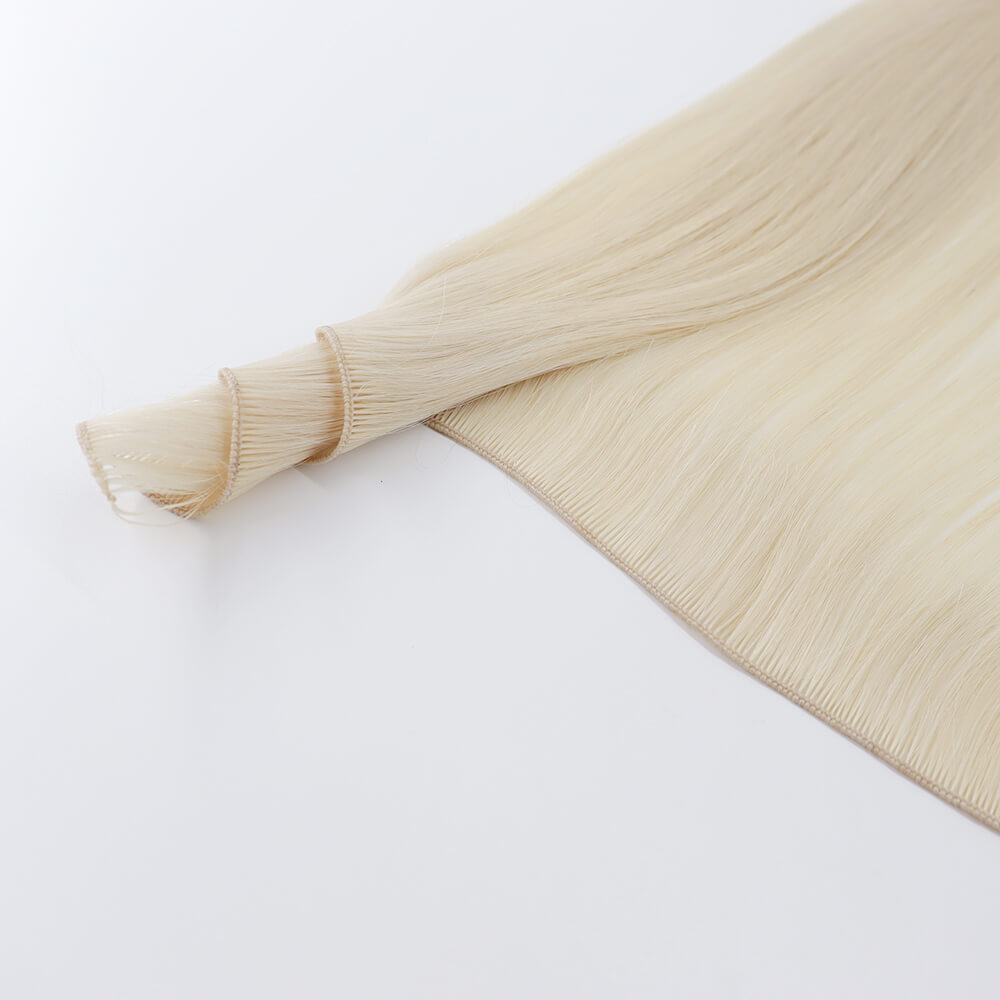
In conclusion, understanding these key differences is crucial in selecting the right hair weft. Whether you prioritize comfort, invisibility, customization, or budget, there’s a weft type suited to your needs. Explore our range to find the perfect addition to your hairstyle.
To give you an even clearer picture, here’s a handy table summarizing the key differences among the weft types:
| Feature | Machine Hair Weft | Genius Wefts | Flat Wefts | Hand-Tied Wefts |
| Weight | 100 grams | 50 grams | 50 grams | 12 grams |
| Width | Wide | Narrow | Wide | Narrow |
| Weft layer | Double or Triple | Single | Single | Single |
| Return Hair | Yes | No | No | Yes |
| Ability to Cut | Yes (needs glue) | Yes | Yes | No |
| Invisibility | 1 | 3 | 2 | 3 |
| Comfort | 1 | 3 | 2 | 3 |
| Price | 1 | 2 | 2 | 3 |
| Delivery Time | Fast | Fast | Fast | Slow |

